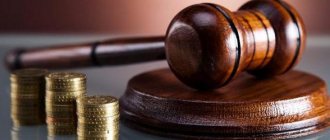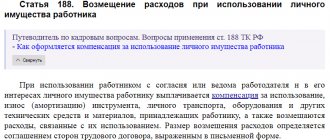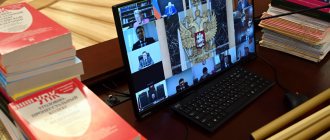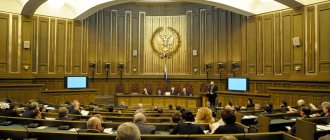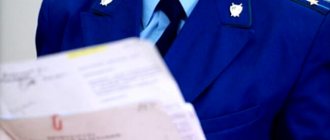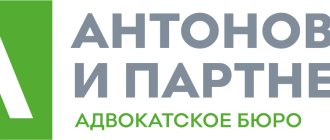What does a sample resolution on the appointment of a forensic examination look like?
Sometimes during the trial it is necessary to provide additional documents and evidence, and sometimes to conduct some examinations. The decision to appoint a forensic examination must be made by the official who is conducting the proceedings of the case. To learn about how and when a forensic examination is ordered, as well as what the order looks like, you need to read this article.
What are checks, their types
A forensic examination is an examination of an object, which is initiated by an official during the consideration of a case. Upon completion of the expert study, an expert opinion is drawn up on issues whose resolution was required in the decision to conduct the examination.
A resolution to appoint a forensic examination is a procedural document that is drawn up by the court or official investigating the case.
There are different types of forensic examinations, we will briefly indicate them:
- Forensic, which are divided into:
- Examinations of various traces - handwriting, technique of performing an object, footprints, signs of a break-in, fingerprints, etc.;
- Examination of video and audio objects, photos of objects and stamps;
- Explosive;
- Examination of coatings, various materials, alloys, etc.;
- Examinations that require special knowledge to check the state of health and psyche of a person:
- Forensic (examinations of victims, examination of corpses, chemical, biological, etc.);
- Forensic psychiatric;
- Psychophysiological;
- Engineering and technical inspections;
- Engineering and transport inspections;
- Engineering and technological expertise;
- Financial expertise;
- Biological examinations (botanical, zoological, microbiological and others);
- Soil and water examinations;
- Agricultural inspections;
- Environmental assessments;
- Art criticism examinations;
- Food inspections.
Info
Each type includes different types of examinations; for each examination there must be grounds for its conduct, that is, questions from the investigation or court that cannot be answered without an examination carried out by a person with special knowledge in a particular area.
Technical expertise - questions to the expert on design and estimate documentation
Issues resolved through an examination of the existing project and estimates for construction, repair and reconstruction can clarify and clarify the following:
- address each part of the project
- check compliance with the type of building, its purpose, operating features
- analyze the estimate documentation, compare with the actual volumes of work and services performed, compare with the declared and market value for each period, stage and process of construction and repair work
- evaluate the declared and actual estimated costs for materials, services of third-party organizations, the feasibility of using machines and mechanisms with certain technical parameters in the process of work
- determine compliance with deadlines at each stage
- check the estimate for unreasonable costs for labor, business trips, and transport services.
In each specific case, questions to the expert when assigning an examination are formulated taking into account the individual characteristics and subtleties of the process. It is necessary to collect the most complete evidence base in order to win a dispute in court.
But many questions are not always good either. A large number of examinations significantly extends the time frame for their implementation and makes the expert assessment unreasonably expensive.
Comprehensive examination questions are aimed at identifying logical relationships between the identified problem and the violations committed, which cannot be determined during a visual inspection.
For example, when laying the foundation, the design requirements for its strengthening and insulation were not met, and geodetic survey data were not taken into account - as a result, cracks appeared in the load-bearing walls, and there was high humidity in the basement.
Only a comprehensive expert assessment will help to correctly calculate losses, the amount of compensation, and determine ways to eliminate the problem.
Questions for examination in case of fire, flooding, leaks and restoration repairs
If there has been a flood, a fire, leaks have been identified and a forensic examination has been ordered, then questions to the expert should be formulated in such a way as to fully prove the cause, the culprit and the amount of material compensation for the damage, and ways to eliminate the problem at the expense of the culprit:
- examination of engineering networks for compliance with standards, actual condition
- recording all damage and determining cause-and-effect relationships
- examination of design and construction documentation, identification of violations that caused a specific problem that requires elimination.
Issues for authorization of the examination can be determined only in consultation with the A-EXPERT manager, and for large objects - only when specialized specialists visit the site and comprehensively study the specific problem.
A-EXPERT is interested in ensuring that all formulated questions are aimed at confirming and resolving a specific controversial situation with a minimum of costs, time and compensation costs.
How much does it cost to formulate questions for the court?
A-EXPERT's pricing policy is very flexible and is configured to take into account only the necessary costs. We do not encourage price increases on invoices and, usually, if the work is not too extensive, we do such work for free. From our experience over the past 10 years, the maximum price was 20,000 rubles. Any problem begins to be solved with the right question. This question structures the problem and makes it simpler. At the very least, a rethink is beginning.
A-EXPERT carries out both an independent pre-trial examination and a forensic examination as determined by the court. A pre-trial technical report from a specialist costs from 20,000 rubles; an example of a report can be seen below:
- Conclusion price:
from 20,000 rubles. - Deadlines:
from 3 working hours days
- Suitability for trial:
- Permits:
Look
- Example of a contract:
legal persons physical faces
- Equipment:
Look
- Conclusion example:
Look
Who can schedule it?
An examination can only be ordered by an official or a participant in the case; various initiators can be in civil and criminal proceedings.
When a criminal case is being considered, an examination can be appointed at various stages of consideration:
- During a preliminary investigation or inquiry - by an investigator or interrogating officer;
- In a judicial investigation - with the permission of the court or on the initiative of a person participating in the case.
To order an examination, there must be sufficient grounds, for example, if there are questions that can only be answered by a person with the appropriate knowledge, that is, an expert.
Attention
By law, parties to civil and arbitration proceedings can ask the court to select a specific expert and submit their questions to him, but in criminal proceedings, participants can only influence questions to the expert.
When is a forensic examination ordered?
Forensic examination - concept and procedure Read more Forensic examination is prescribed when issues arise that require special knowledge in various fields.
Forensic examination is the one. which was appointed during a trial or during an inquiry or investigation in a criminal case (yes, an examination during an investigation is also called judicial). The examination is carried out by persons with special knowledge - experts, forensic institutions.
Sometimes an official has the right to decide whether or not to order an examination. In other cases, an examination is mandatory. If a mandatory examination is not carried out in criminal proceedings, the case cannot be brought to court. In civil and arbitration proceedings there is no formally obligatory examination, but in practice everyone knows that if in the case of, for example, a boundary dispute,
When is it necessary to appoint an examination in civil and arbitration proceedings?
The procedure for appointing an examination in civil proceedings More details
Neither the Arbitration Procedural Code of the Russian Federation (APC RF) nor the Civil Procedure Code of the Russian Federation (CPC RF) stipulate specific cases of conducting an examination. The Code of Civil Procedure of the Russian Federation clarifies that an examination is prescribed when special knowledge is needed in various fields of science, technology, craft, and art (clause 1 of Article 79 of the Code of Civil Procedure of the Russian Federation).
According to the Arbitration Procedure Code of the Russian Federation, an examination is prescribed when questions arise that require special knowledge. A special case of ordering an examination is given - the need to verify a statement about falsification of the presented evidence (clause 1 of Article 82 of the Arbitration Procedure Code of the Russian Federation).
When is it necessary to appoint an expert examination in a criminal trial?
Forensic medical examination of the severity of harm to health More
In criminal cases, the appointment of an examination during the investigation may be mandatory (Article 196 of the Criminal Procedure Code as amended on June 17, 2021), if
- the causes of death are unclear,
- harm caused to health,
- the suspect or accused behaves in a way that casts doubt on his sanity or ability to independently defend himself in the process, testify, or there are suspicions that he is a drug addict
- a crime has been committed against the sexual integrity of a person under 14 years of age and it is necessary to find out the presence of a disorder such as pedophilia,
- it is necessary to accurately establish the age of the suspect, accused, victim, because it depends on age whether the suspect is subject to criminal liability or qualifications (choice of article of the Criminal Code of the Russian Federation).
What does the document indicate?
The appearance of the resolution is slightly different, depending on who initiates it and at what stage of the case. Typically, the resolution specifies the following mandatory items:
- Information about the date and place of appointment of the resolution;
- Full name and position of the person who compiled the document;
- Full name and position of the person on whose initiative it was drawn up;
- Name of the expert center;
- Name of the examination;
- Grounds for conducting the examination;
- Questions for the expert;
- Expert warning about liability;
- Timing of the examination;
- Description of objects submitted for examination;
- Signature of the person who compiled the document.
Info
Since the law does not establish a special template that the resolution must adhere to, it is drawn up according to the general standards that apply to documents of this kind.
What should be reflected in the resolution
A resolution ordering a forensic examination must contain:
- date and place of the decision;
- an indication of the judge who made the decision;
- an indication of the person on whose initiative the examination is being carried out;
- indication of the expert institution;
- the circumstances of the case that need to be clarified;
- questions for experts;
- warning experts about liability;
- duration of the examination;
- a list of things that are transferred to experts;
- signature of the judge and the court clerk;
- the procedure for appealing a decision (only in one case - see Part 3 of Article 389.2 of the Code of Criminal Procedure of the Russian Federation).
How to ask questions to a forensic expert Read more
Resolution on appointment of examination form
Procedural codes do not require the use of certain resolution forms, although these are approved by some departmental regulations (for example, for tax and customs authorities). At the same time, the discrepancy of the document in form with such a form does not mean the illegality of the resolution (Resolution of the Federal Antimonopoly Service of the Eastern Military District dated November 17, 2008 No. A11-2172/2008-K2-23/58).
A sample resolution on the appointment of an examination can be downloaded here: Resolution on the appointment of a forensic examination - sample.
Should they notify about the examination?
Of course, if we are talking about a criminal trial, then its participants must be familiar with the intentions of conducting a forensic examination. In arbitration or civil proceedings, the decision is made directly at the court hearing, and therefore does not require separate review by each person.
Other interested parties can also familiarize themselves with the resolution on the examination, but they become familiar with it after signing the protocol.
In criminal proceedings, participants must be familiarized with it; this is the responsibility of the investigator, but if persons deliberately avoid familiarization, this will not be a violation on the part of the official.
Features of forensic technical and handwriting examinations in criminal proceedings
In courts, questions often arise that require special knowledge in the field of handwriting and forensic technical examination of documents.
Thus, handwriting examination is prescribed for:
- establishing the authenticity of a signature in a document (for example, to answer the question: “Who, I.I. Ivanov himself or another person, signed on behalf of I.I. Ivanov in the disputed document?”);
- identifying the executor of an inauthentic signature (for example, to answer the question: “Who, P.P. Petrov or S.S. Sidorov, signed on behalf of I.I. Ivanov in the disputed document?”);
- solution to the issue: “Signatures were executed by one or different persons on behalf of I.I. Ivanov. in several documents?";
- identifying the executor of the handwritten note (handwritten text) in the document. In this case, the expert is asked questions such as: “Was the handwritten text of the document (or handwritten entries in certain columns of the document) made by I. I. Ivanov?”, “Who, Ivanov or Petrov, made the handwritten entries in the document?”;
- solving the question: “Did one or different persons make handwritten entries in several documents or in specific columns (sections) of one document?”
The need to appoint a forensic technical examination to determine the limitation period for the execution of document details arises if it is required:
- to establish the fact that the time of drawing up the document or its individual fragments does not correspond to the date indicated in the document;
- set the execution time of an undated document;
- assign the time of drawing up the document to a certain period;
- identify discrepancies between the dates and times of actual execution of the document and those indicated in the sample under study;
- determine the absolute or relative age of the document and its individual elements;
- establish in what specific period of time the document and (or) its details were drawn up;
- identify whether changes were made to the sample under study after it was actually compiled (signed);
- determine the sequence for entering details.
The case file does not always contain the original document that needs to be examined. You need to understand that in order to conduct a forensic technical examination to determine the limitation period for entering details into a document, only the originals of the relevant documents are needed, since during the examination, clippings from strokes of signatures or impressions of seals (stamps) are examined for the presence of volatile solvents (the examination is carried out according to the method approved by the Ministry of Justice of Russia and based on determining the relative content of volatile solvents in the strokes of the details under study).
In this case, partial damage to the document occurs, for which the experts request permission from the court or body that appointed the examination (in accordance with Article 10 of the Federal Law “On State Forensic Expert Activities in the Russian Federation”, hereinafter referred to as the Law on State Forensic Expert Activities) . Before using “destructive” methods, it is necessary to photograph the document and the immediate object of study in compliance with the rules of forensic photography: photographs of the general view of the document and detailed photographs of objects that are destroyed or damaged (for example, a signature or seal impression, the strokes of which are cut out for research), are taken.
As for the handwriting examination, in order to obtain the most accurate answers to the questions posed, it is also better to hand over the original document to the experts, but its absence is not as critical as for a forensic technical examination - a handwriting examination can also be carried out using a copy - both paper and electronic In this case, when deciding on the advisability of conducting a handwriting examination based on a copy of a document, it is necessary to take into account the specifics of its purpose and implementation. The main feature is, in particular, that the result of the examination and conclusions will not answer the question of whether such a document exists at all, a copy of which was examined. When a copy of a document is submitted for examination, the expert examines not the signature (record) itself, but its image, and therefore cannot establish the method of making the signature in the original document and determine whether technical means and techniques were used to reproduce it and whether the image of the signature was not made in the submitted copy by installation.
In addition to the document being examined (original or copy), for handwriting examination it is necessary to provide samples of the signature (handwriting) of the person being checked and the alleged executors of the disputed signature. In accordance with the research methodology, the expert needs free or conditionally free and experimental samples.
Free samples are signatures in documents made before the initiation of a criminal case. The main requirement for such sample documents is reliability. The fact that signatures were made on behalf of the person being verified should not raise doubts (that is, it should be confirmed by the person himself if there is sufficient objective evidence that it was he who performed the signature). It is important to remember that a person can have several signature options, which sometimes differ significantly, and use one or another option depending on a number of factors, such as the significance of the document, the conditions for signing (for example, an awkward position), the space allocated in the document for signature, writing instrument (fountain pen, ballpoint, gel, capillary, etc.), type of document base (paper, cardboard, plastic, etc.), substrate (hard or soft), etc. In this regard, when ordering an examination, it is necessary to find sample documents that are as comparable as possible to the one being examined in terms of the listed parameters. If it is impossible to submit free samples for examination, conditionally free samples can be taken - documents prepared after the initiation of a criminal case, but not specifically for the examination (for example, explanations, petitions, statements, signatures (records) in protocols of investigative actions).
Experimental samples are samples taken by the investigator (court) from the person being inspected specifically for examination. They are necessary to check the accuracy of free samples - that is, they allow you to verify that they were completed by the person being tested. The main requirement for experimental samples is to best match the signature (record) under study in terms of execution conditions (sitting, standing, signing a document placed on an inclined surface, the type of writing instrument and document base, the presence of graphing lines in the document, etc.) .
When conducting an examination of handwritten records, it is necessary that the letter composition of the records being examined is repeated in the samples. This is especially important when studying short notes of one or two words. If the record under study includes digital symbols, then they must be included in the samples.
Experimental samples acquire particular significance when the controversial entry is made in altered handwriting (“unusual” hand, block letters). In this case, among the experimental samples there must be elements made in the same way.
The expert has the right to request the provision of additional materials necessary for the study, and if there are insufficient materials to prepare a conclusion, he may refuse to conduct the examination, which he must declare in writing, justifying the reasons for the refusal.
When analyzing an expert opinion, it makes sense to pay attention to the following aspects, especially if the defense attorney and his client do not agree with the expert’s conclusions.
The examination must be carried out in accordance with the requirements of the Code of Criminal Procedure of the Russian Federation and the Law on State Forensic Expertise, as well as in compliance with the methodology of the corresponding research. In this regard, when challenging the conclusion, it is necessary to pay attention to both procedural violations (the basis and procedure for ordering the examination, the procedure for its production, the qualifications of the expert, the start and end dates of the proceedings, its suspension and resumption, the use of certified measuring equipment, etc.), as well as methodological ones. To identify the latter, it is advisable to contact an expert organization that will review the disputed conclusion. An expert with appropriate qualifications and work experience will determine whether the research methodology was chosen correctly, whether any violations of the methodology were committed, whether the study was carried out in full, whether the rules for using a particular method were followed, and whether the conclusions are justified.
Thus, when considering one of the cases, an examination was carried out to establish how long ago the document was executed. When reviewing the expert's opinion in a third-party expert organization, it was found that the conclusion about the period of execution of the document was made based on the results of using a research method that was not provided for by any method for determining the limitation period and was intended to resolve other issues. In addition, even when applying this method, the expert committed numerous violations and deviations from the rules. Thus, the examination was carried out in violation of the research methodology, and the conclusions contained in the expert’s report are unfounded and erroneous.
In another case, expert reviewers revealed that the study was conducted using non-existent methods - in the list of used literature, the expert indicated some sources, but in fact conducted the study, freely interpreting and citing other literature data, which subsequently influenced his conclusions. This fact was also reflected in the review, and the court was critical of the conclusions formed in the conclusion.
After receiving the conclusion, the expert may be summoned for questioning. Most often he is asked questions regarding the choice of a specific methodology and compliance with its requirements during the examination process, namely:
- suitability of the research object for using the chosen methodology;
- the research methods used, their sufficiency to answer the questions posed, the procedure for applying a specific method;
- compliance with the stages of the study;
- sufficiency in quantity and quality of samples submitted for examination, etc.
When preparing to question an expert, the defense lawyer should rely on the results of the review of the report and raise questions regarding the identified violations of the methodology, while at the same time preparing to submit a reasoned request to order an additional or repeat forensic examination.
In general, it is necessary to approach the issue of ordering a forensic examination extremely carefully and reasonably, since, despite the fact that no evidence has pre-established force for the court, it is the expert opinion that can become one of the main evidence in the course of legal proceedings.

